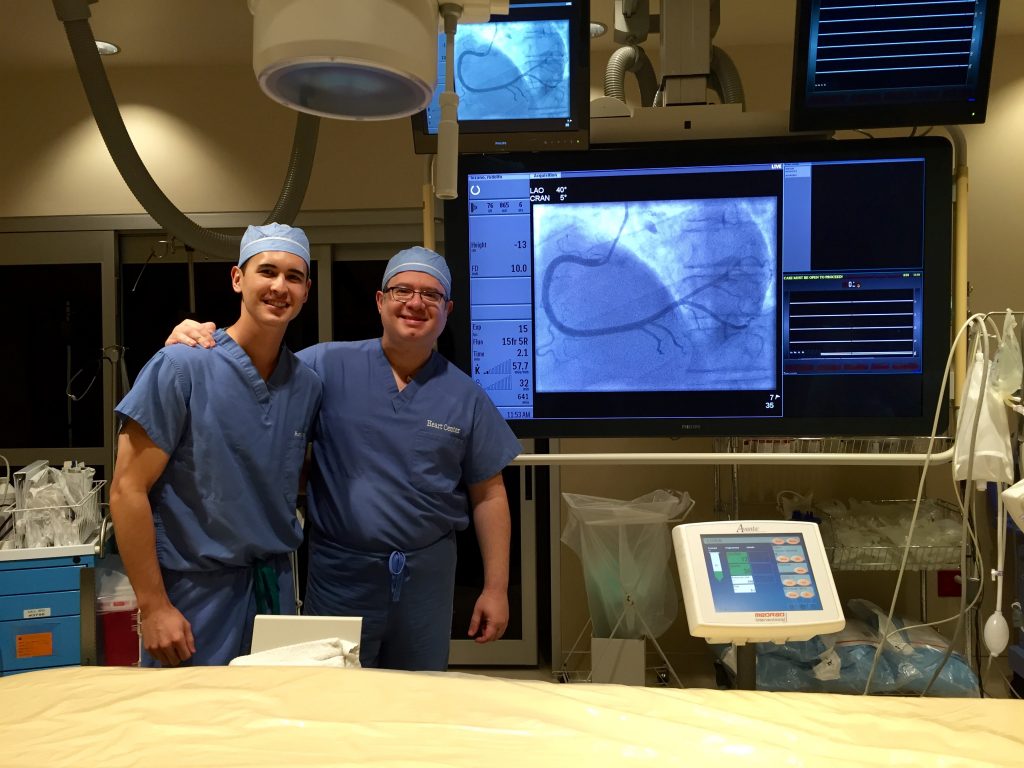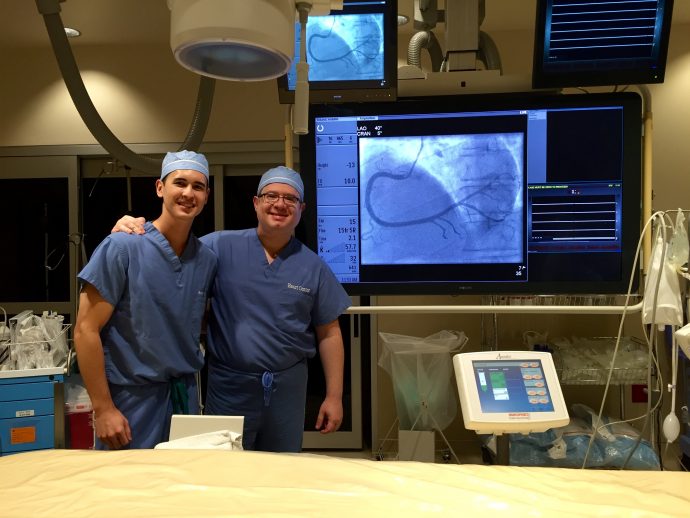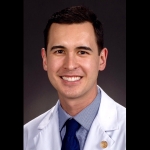Before I began medical school, I always considered the city of Yuma, Arizona, as a mere pit stop on the drive to San Diego, California. Every summer, my family would stop in Yuma to refuel on gas and grab a quick bite to eat. My memories of the barren, desert landscape reminded me of an old city in the Wild West, complete with scorching hot summers and almost no areas of shade. It’s as if you could almost imagine the tumbleweeds blowing across the empty streets. With just over 90,000 residents, this smaller city is located in the southwestern corner of Arizona, near the borders of California and Mexico. Interestingly, the city is the nation’s third largest vegetable producer and is known as America’s winter vegetable capital, producing over 90% of the country’s leafy vegetables between November and March. However, as I entered The University of Arizona College of Medicine – Phoenix in 2013, I never imagined I would spend almost five mont
hs living in Yuma, AZ.
I decided to participate in the Rural Health Professions Program (RHPP) towards the end of my first semester in school. Dr. Jonathan Cartsonis, the director of the program, gave a very inspiring presentation on the benefits of rural medicine and why more students should strive to work with rural and underserved populations. He explained how the program offers students the opportunity to not only participate in a unique experience in a different clinical setting, but it also encourages students to become more involved in the community, a recurring theme I saw in Yuma, AZ. For example, I spent several weekends during my rural rotations helping local physicians provide free physical exams to students in the surrounding high schools and community college. I went on weekly trips with a physician to help provide palliative care to patients in their own homes, where I left humbled by the gratitude and appreciation the families had for that dedicated physician. Furthermore, I even saw doctors work with local food banks and homeless shelters to improve the health and well-being of the underserved citizens of Yuma. It was clear that many of the Yuma residents had strong ties within their community, which motivated them to continue investing in the city’s growth and prosperity.
One of the main requirements to com plete the RHPP includes spending 15 weeks of the third-year clinical rotations at a rural site. There, the time is split up into six weeks of internal medicine, six weeks of family medicine, and three weeks of pediatrics. In addition to clinical rotations, students attend various lectures that cover increasingly important topics in today’s healthcare field, including telemedicine, cultural issues, leadership, careers in public health and the Indian Health Services, and loan repayment programs for those who choose to practice in a rural setting. Other benefits of the program include developing lasting relationships with your mentors, understanding the complexities of social and economical issues that face many residents in rural areas, and learning how rural healthcare facilities develop ways to improve the access to quality healthcare.
plete the RHPP includes spending 15 weeks of the third-year clinical rotations at a rural site. There, the time is split up into six weeks of internal medicine, six weeks of family medicine, and three weeks of pediatrics. In addition to clinical rotations, students attend various lectures that cover increasingly important topics in today’s healthcare field, including telemedicine, cultural issues, leadership, careers in public health and the Indian Health Services, and loan repayment programs for those who choose to practice in a rural setting. Other benefits of the program include developing lasting relationships with your mentors, understanding the complexities of social and economical issues that face many residents in rural areas, and learning how rural healthcare facilities develop ways to improve the access to quality healthcare.
When I finally made the decision to apply to the RHPP, I will admit I was a bit skeptical about the logistics of the program. The RHPP was brand-new for UA COM-Phx, and with myself included, only three students from my class joined. However, for the most part, it worked out well for the three of us. One aspect that I particularly enjoyed was that while I did spend a decent amount of time in Yuma for my rotations, I still had plenty of exposure working with residents and physicians in the larger academic institutions here in Phoenix. I had a nice balance between the two different locations, but surprisingly, I believe there were times when I learned more about medical care while in Yuma because my role was similar to that of an intern resident. During internal medicine, I saw many patients with a wide range of health conditions and disease pathologies. However, contrary to the standard norm where the residents complete most of the admission orders and documentation, it was me who was in charge of these tasks. Everyday, I saw patients in the emergency department by myself, reported directly to attending physicians instead of residents, and was the first to see patients for cardiology consults. I would then help complete a large portion of the necessary admission orders that third-year medical students typically do not get to do, which helped build my confidence and clinical skills tremendously. Further, I was fortunate enough to see and participate in advanced cardiac procedures, including angioplasty, stent placements, and transcatheter aortic valve replacements. On top of that, I even restored several patients’ irregular heart rhythms using electrical cardioversion. It is safe to say that my experience in Yuma provided me with opportunities that I otherwise would never have been able to do, and I firmly believe it broadened my medical knowledge and clinical skills.
Looking back, I am very happy with my decision to participate in the Rural Health Professions Program. I was fortunate enough to meet dedicated physicians who were truly invested in helping me become a better clinician, and I continue to use their advice to this day. Despite the fact that Yuma, along with other rural cities, continues to have a shortage of physicians, it was inspiring to see the way in which the community worked together to improve access to quality healthcare for underserved populations. Now, as I begin my last year in medical school, I can safely say that I left Yuma filled with great memories and experiences that will help me as I continue on my journey to become a physician.
Patrick Kishi is part of the 2017 class at The University of Arizona College of Medicine – Phoenix. He graduated from The University of Arizona in 2013 with a degree in physiology and a minor in Spanish. He is passionate about medicine, research, and healthcare policies. Outside of school, Patrick loves to travel and explore new cities.


